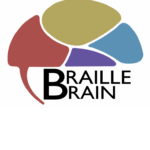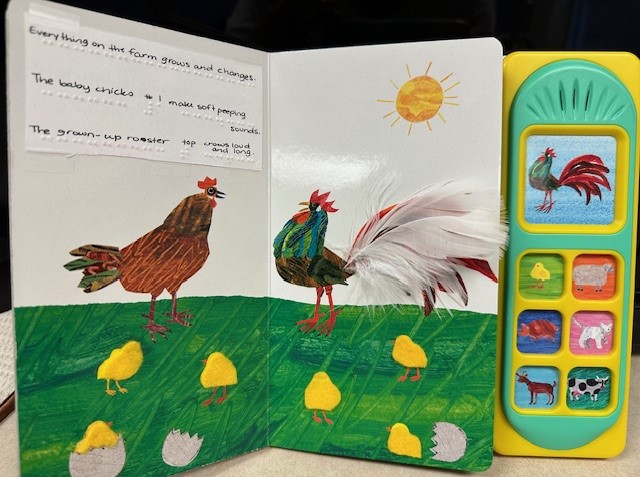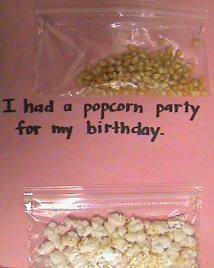The Common Core CCR Anchor Standard Integration of Knowledge and Ideas refers to the students’ ability to think across related texts to compare and contrast a theme/topic (Calkins et al., 2012). For example, students compare a topic such as friendship in the Frog and Toad books to friendship in Charlotte’s Web. The goal of Integration of Knowledge and Ideas is for students to use multiple sources to address a question or solve a problem. Students are also expected to be able to research a topic using credible sources and present their finding in writing or in an oral presentation.
The table below provides a detailed look at the CCSS CCR Anchor Standard Integration of Knowledge and Ideas.
| Standard Number |
Standard Description |
|
7. | Integrate and evaluate content presented in diverse media and formats, including visually and quantitatively, as well as in words. |
|
8. |
Delineate and evaluate the argument and specific claims in a text, including the validity of the reasoning as well as the relevance and sufficiency of the evidence. |
|
9. |
Analyze how two or more texts address similar themes or topics in order to build knowledge or to compare the approaches the authors take. |
(Visit the CCSS website to see the complete CCSS for Integration of Knowledge and Ideas).
The CCR anchor standards within Integration of Knowledge and Ideas require students to look deeper at text as they make connections and comparisons across various texts. Integration of Knowledge and Ideas requires students to compare two texts or to compare a written text to other media such as video or audio (McLaughlin & Overturf, 2013; Calkins et al., 2012). Students must be able to use technology in meeting the requirements of Integration of Knowledge and Ideas using online depictions of literary text compared with printed text McLaughlin & Overturf, 2012). As students compare themes/topic across multiple texts they will develop a deeper understanding about the topic (Calkins et al., 2012). According to the CCSS, Integration of Knowledge and Ideas Anchor Standard 8 is only applicable to reading informational text. This is because in reading literature there are often collections of books on one particular theme. However, when reading nonfiction text the reader will need to read multiple texts on a topic to compare the authors’ ideas, information, perspectives, and reasoning (Calkins et al., 2012). Integration of Knowledge and Ideas also requires students to compare and contrast two or more texts on a similar topic and to understand how they develop similar claims (Calkins et al., 2012; McLaughlin & Overturf, 2013).
Integration of Knowledge and Ideas: Impact for Students who Read Braille
Integration of Knowledge and Ideas requires students to read a wide range of text varying in text complexity, lengths, and genres. Students are expected to compare and contrast between the various text types as well as between authors, videos, and plays. Students who read braille often do not have access to a wide range of reading materials and therefore, lack experience reading a wide range of text. They also do not have access to visual media. In meeting the requirements of this standard students who read braille must have access to a variety of reading materials in their primary learning medium. They must also be provided with access to visual media including audio description.
Integration of Knowledge and Ideas requires students to activate their prior knowledge to aid in their comprehension of the concepts and ideas presented in the various types of text. Students who are sighted gain knowledge about many ideas or concepts through seeing things in the environment or participating in a variety of activities on a daily basis, thus providing them with lots of prior knowledge about concepts or ideas. However, for students who read braille prior knowledge of ideas and concepts is limited to what they have actually experienced through their sense of touch, hearing, taste, and smell. Therefore, they may have limited life experiences, resulting in their inability to understand certain ideas or concepts presented in various texts. To meet the goals of Integration of Knowledge Ideas students who read braille must be provided with meaningful experiences to aid them in their understanding of concepts or ideas presented in various text genres.
Integration of Knowledge and Ideas expects students to use credible sources to conduct research and present their findings in a written or oral presentation. Students who read braille are often presented with their materials by a TVI and therefore, do not have experience and also may not have access to a variety of sources to conduct research. To achieve the requirement of Integration of Knowledge and Ideas students who read braille must be explicitly taught how to use resources to conduct research. They must also be provided with access to resources (e.g. electronic dictionaries, online libraries, magazines, videos with audio descriptions) that they can use to conduct research.
Integration of Knowledge of and Ideas: Characteristics of Proficient Readers
Proficient readers of Integration of knowledge and Ideas read lots of texts in a range of text complexity, lengths, and genres. They read different kinds of text differently (e.g. if reading narrative text they might look closely at the setting or characters versus reading expository text in which they might construct and revise summaries of what they have read). They apply reading strategies as they read (e.g. make notes, monitor and repair when comprehension breaks down, and reread sections for clarity). Proficient readers of Integration of Knowledge and Ideas have lots of experience comparing and contrasting themes or topics, stories, genres, and author’s. They activate their prior knowledge when reading on themes or topics, stories, genres, and authors. Proficient readers of Integration of Knowledge and Ideas understand how to use resources to further and expand their knowledge including audio, video and multimedia. They apply their comprehension skills as they examine text on the same topic and determine where the interpretations disagree.
Integration of Knowledge of and Ideas: Characteristics of Struggling Readers
Good comprehension requires memory and the ability to synthesize material. Struggling readers of Integration of Knowledge and Ideas may not be able to recall what they read in the text. They may also have poor reading comprehension. The inability to recall or understand information will result in the students’ inability to synthesize information to create a written or oral presentation. Struggling readers of Integration of Knowledge and Ideas may not understand the difference between an argument and persuasion or between fact and opinion. To meet the expectation of this standard student must be able to examine the author’s argument. Struggling readers may not understand how to analyze an author’s argument to determine if the evidence supports the claim. Struggling readers of Integration of Knowledge may require additional support or practice in comparing and contrasting themes, stories, genres, plays, etc. Finally, they may apply few or no reading comprehension strategies as they read.
Additional Resources
Google Scholar an internet tool for student research: http://scholar.google.com/.

Braille Brain
Reading
- READING: Foundational Skills for Reading
- Integration of Knowledge and Ideas
- Vocabulary Acquisition and Use
- Braille Hand Movement and Refreshable Braille Displays
- Conventions of Standard English: Standard One
- Conventions of Standard English: Standard Two
- Writing and Language
- Craft and Structure
- Key Ideas and Details
- Best Practices for Teaching Braille and STEM to the Visually Impaired
- Assistive Technology to Support STEM Subjects for the Visually Impaired
- Compensatory Skills: A Focus on Organization
- Foundational Skills for STEM
- Math Instruction for Students with Visual Impairments
- Science Instruction for Students with Visual Impairments
- Tactile Graphics
STEM
- Best Practices for Teaching Braille and STEM to the Visually Impaired
- Assistive Technology to Support STEM Subjects for the Visually Impaired
- Compensatory Skills: A Focus on Organization
- Foundational Skills for STEM
- Math Instruction for Students with Visual Impairments
- Science Instruction for Students with Visual Impairments
- Tactile Graphics
- Braille Brain
- About Braille Brain
- Braille Training Program
- Foundational Skills for Reading
- Integration of Knowledge and Ideas
- Vocabulary Acquisition and Use
- Braille Hand Movement and Refreshable Braille Displays
- Conventions of Standard English: Standard One
- Conventions of Standard English: Standard Two
- Writing and Language
- Craft and Structure
- Key Ideas and Details
- Best Practices for Teaching Braille and STEM to the Visually Impaired
- Assistive Technology to Support STEM Subjects for the Visually Impaired
- Compensatory Skills: A Focus on Organization
- Foundational Skills for STEM
- Math Instruction for Students with Visual Impairments
- Science Instruction for Students with Visual Impairments
- Tactile Graphics



